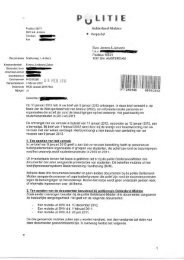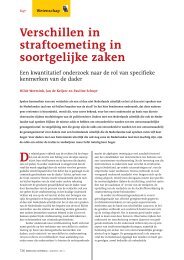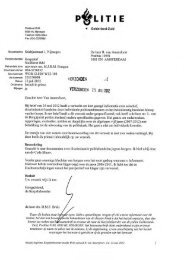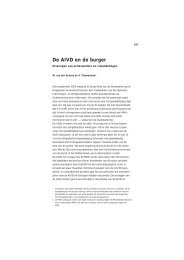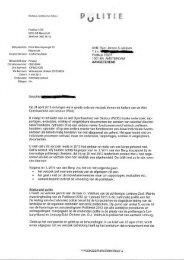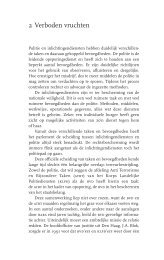Biometrics - Buro Jansen & Janssen
Biometrics - Buro Jansen & Janssen
Biometrics - Buro Jansen & Janssen
Create successful ePaper yourself
Turn your PDF publications into a flip-book with our unique Google optimized e-Paper software.
3.3 Security Procedures<br />
<strong>Biometrics</strong> is usually used as a security procedure. This can be classified into enrolment and<br />
authentication [Fleming, S.T., p.120, 2003].<br />
Enrolment<br />
During the enrolment phase, biometrics is obtained and linked to an identity of an<br />
individual. The identity is encoded and can now be stored, retrieved and matched. Some<br />
biometric devices store the data locally within the device itself. Individuals must enrol and<br />
authenticate with the same device. Other biometric systems allow the enrolled biometric<br />
data to be stored in a database that can be accessed from multiple locations. For example<br />
there are various controlled entry points, and there are many devices distributed over a<br />
wide area and many potential users. In this case the device allows retrieving the biometric<br />
data from a database and then performs comparisons. Data can be retrieved by a sensory<br />
device for example a fingerprint scanner, and the distinctive biometric characteristic can be<br />
identified.<br />
Authentication<br />
Authentication is the process of an individual claiming to have a certain identity. New<br />
information is compared to the stored data. Authentication can take place in two different<br />
ways: identification and verification.<br />
Identification<br />
Identification is when an individualʹs biological features are searched within a data set.<br />
This is a one‐to‐many search. For example if fingerprints are found at a crime scene, they<br />
are compared to fingerprints of all known delinquents stored in databases. The system<br />
returns all the closest matches to the individual. Identification is usually performed in a<br />
non‐invasive context.<br />
Verification<br />
Verification occurs when someone claims to have a particular identity, for example to gain<br />
access to a high‐security area. The biometric system compares the newly scanned data to a<br />
previously stored version. Thus the userʹs identity is then validated biometrically. This is a<br />
one‐to‐one search process. A direct comparison between the userʹs features and the data are<br />
matched. With a certain error margin it allows for minor temporal factors or sensor<br />
discrepancies.<br />
As a general rule verification systems are considerably more accurate than identification<br />
systems, primarily because one‐to‐one comparisons are technically simpler than one‐to‐<br />
many.<br />
21






